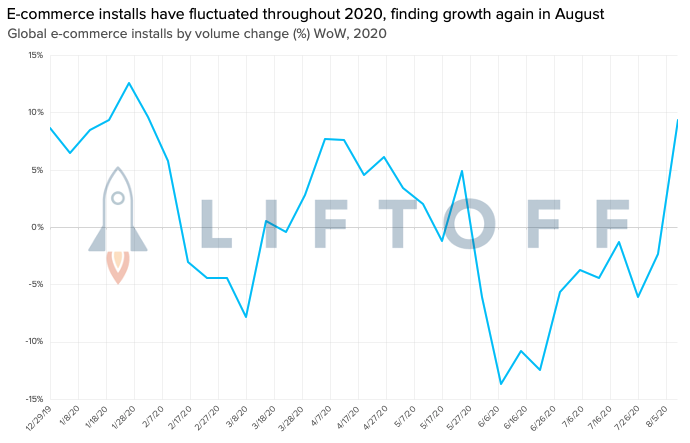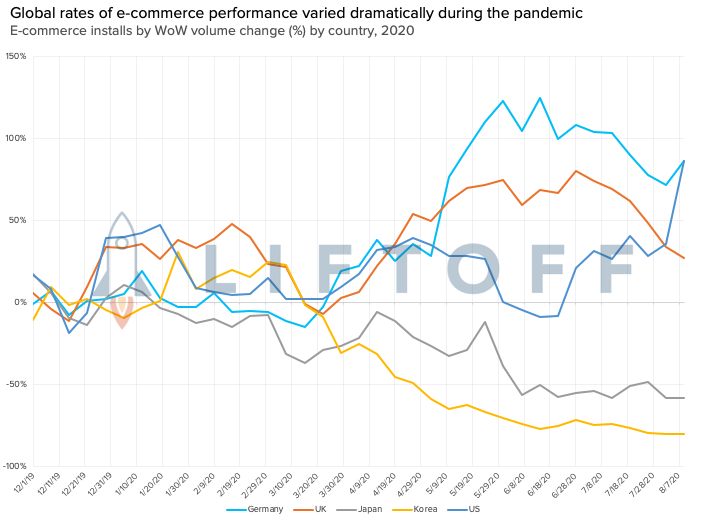
It’s About Time E-Commerce Marketers Prepare for Christmas
Summer’s not over, but savvy e-commerce marketers are already starting their holiday season preparations. And though Christmas may seem far off to some, these unprecedented times call for out-of-proportion responses, especially as m-commerce could be the driving force behind holiday spending in 2020.
The Coronavirus pandemic and subsequent global lockdown have thrust e-commerce into the spotlight, as more people than ever are buying their goods online. As noted by industry analyst Benedict Evans, “the UK went from 20% e-commerce penetration to over 30% in two months, and the USA from 17% to 22%.” These findings were based on recent US census data, which shows an absolute US e-commerce sales increase of 32% in Q2. Just one subset of e-commerce, groceries, has seen an incredible rise. eMarketer forecast “that 52.9% of internet users will make at least one online grocery order through a digital channel in 2020,” well above 37.8% of internet users in 2019.
But how much will m-commerce feature in this story? During 2020, the sector has experienced a rocky road to growth. Based on findings from Liftoff data across 2020, e-commerce app installs (an indicator of growth) stopped and started since January. The charts below compare total paid shopping app installs across 2020 versus a baseline of December 2019 installs to determine how much app installs based on advertising have risen or fallen over the year.

Liftoff tracked two definite periods of growth in January and from April to May, where e-commerce app installs were consistently above the baseline set in December 2019. Yet app installs also fell, most noticeably during February and June. The latter is unexpected, but it could be due to increasing foot traffic as Western economies opened up during the summer. To better understand this trend, we sampled five countries to show that, by region, growth fluctuations depend on where an app is and how those countries responded to the pandemic.

Our country breakdown reveals a definite inflection point on the week of March 22nd, where most markets either experienced a rapid rise or fall in app installs. Asian markets (Japan and Korea), have both atrophied performance, with 59% and 80% fewer installs vs. the December average. Focusing on Japan, a country facing credit card number shortages due in part to the volume of online orders, this might surprise. But the data doesn’t cover installs based on word-of-mouth, which could make up this seeming shortfall.
The US (86%), UK (27%) and Germany (86%) all received a boost in shopping app installs since March. German users are particularly ready to switch to m-commerce, averaging 94% above December’s baseline from the beginning of May to August, suggesting the market is catching up, and catching fast.
In countries where apps have seen a steep rise of installs, app marketers need to maintain momentum. Retaining users with the right offers based on personalized preferences is paramount. Login data and user profiles circumvent the need for tracking and allow the app experience to cater to users, an ongoing and important trend in 2020.
Summer may not yet be over, but marketers in this competitive sector must act fast to capitalize on the increased interest in m-commerce, and retain valuable customers.
For more shopping data and insights, download Liftoff’s 2020 Mobile Shopping Apps Report to chart your course for the rest of the year. Keep track of our resources page for more updates, or sign up to our newsletter in the sidebar to get the latest releases straight into your inbox.